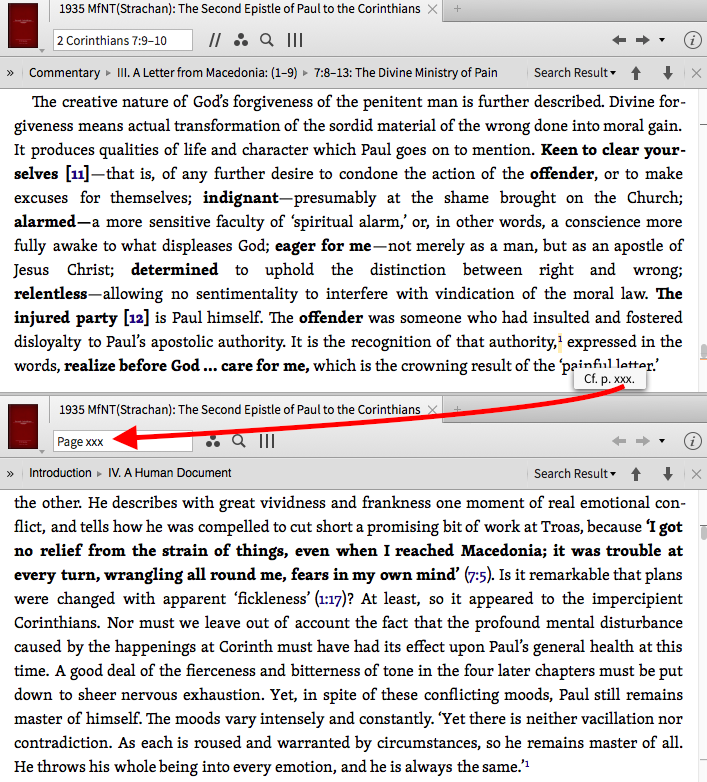What does "cf. p. XXX" mean?
I encounter this (cf. p. xxx) often but want to know how I find the "cf" - "confer", or "compare".
What is the document to "confer" with, or "compare" to?
Thanks
Comments
-
Rodney Jenkins said:
What is the document to "confer" with, or "compare" to?
Pages with Roman numerals typically are prefatory. Can click on "p. xxx" to open Page xxx in that resource.
For screen shot, clicked note to position resource to page xxx followed by copying resource to another tab, then dragging tab below. In original tab, clicked back arrow to return to footnote where "Cf. p. xxx" had been found.
Keep Smiling [:)]
0 -
Rodney Jenkins said:
I encounter this (cf. p. xxx) often but want to know how I find the "cf" - "confer", or "compare".
What is the document to "confer" with, or "compare" to?
Thanks
Unless the context specifically points to another resources, the "cf p. ___" means to confer or compare the topic you're currently reading about on that page in the book you're currently reading.
Note that you can turn page numbers on/off in the visual filters dialog in the current resource panel (icon with 3 grey dots forming a triangle), under resource (note that not all resources have their page numbers encoded in logos). You can move directly to a page by clicking the navigation dialog (where the verse numbers/headings are, and type in the new page number.
Help links: WIKI; Logos 6 FAQ. (Phil. 2:14, NIV)
0 -
Pages with Roman numerals typically are prefatory.
Just to make it even more explicit, frequent norm is that a general preface or introduction to the book that speaks about what the book is about but is not part of the main body of the book is paged with Roman numerals: i, ii, iii, etc. A commentary for instance, will have introductory matters such as date, author, provenance and usually will use this convention.
Once you get into the main body of the book (for instance, actual commentary in a commentary), then the page number format switches to the kind of numbers we are most used to (which is actually Hindu-Arabic in origin!): 1, 2, 3, etc.
Bottom-line: if you see Roman numerals, normally this refers to the opening pages of the book.
0
